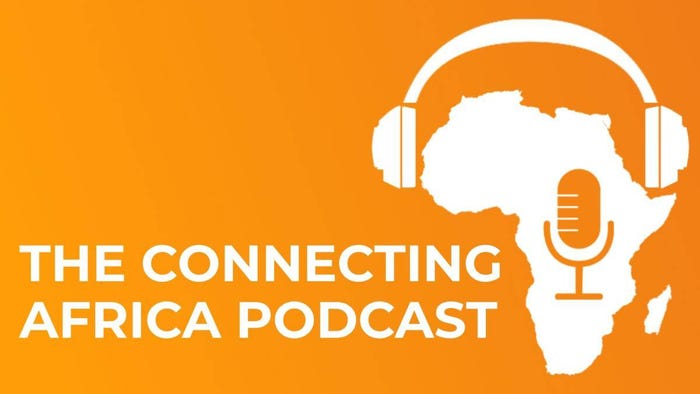Intelsat, AMN expand rural coverage across Africa
Satellite operator Intelsat and off-grid tower provider Africa Mobile Networks (AMN) have now deployed more than 3,000 rural base satellite antennas across Africa, with plans for more deployments in 2024.

Satellite operator Intelsat and off-grid tower provider Africa Mobile Networks (AMN) have deployed more than 3,000 rural base satellite antennas across Africa since 2018, providing telecom services to more than 8 million people, with plans for more deployments in 2024.
AMN was founded in 2013 with a mission to build, own and operate mobile network basestations serving rural communities in sub-Saharan Africa.
AMN specializes in connecting communities, reducing upfront and ongoing equipment costs while allowing cell services to be extended into areas where traditionally it was not economically viable to do so.
"Our focus really is on the rural and ultra-rural areas, where there's usually no grid electricity, there's no line of sight to other macro towers and there's no fiber connectivity. We focus on the areas where no one else is and it's not easy for anyone else to go," AMN Manager for Project Jennifer Darcy told Connecting Africa in an interview.
The towers are all exclusively solar powered which removes some of the power constraints in rural villages.
Using satellite to provide backhaul connectivity to the remote cell towers is integral to the business model as the location and terrain of AMN's towers often do not allow backhaul solutions like fiber and microwave to be used.
"We partner with somebody like Intelsat who can provide us that ubiquitous connectivity so that we can bring those communities, not just online, but provide basic telecommunication services as well. We only build towers where there's no service whatsoever. So, the impact is actually really colossal," Darcy added.
AMN does have other connectivity partners, but Intelsat is one of its biggest and the satellite company is also an investor in AMN.
The tower company has over 4,000 sites in 15 countries, with 3,000 of those in partnership with Intelsat.
AMN is well funded, with total investments to date of more than $100 million – enough funding to grow to 7,000 sites.
"We started discussing a partnership with AMN in about 2016, and they were already up and running in the Democratic Republic of Congo (DRC). We saw the model, we absolutely loved it, I spent a lot of time looking at the towers and how they were built," Rhys Morgan, VP and GM for EMEA Media and Networks at Intelsat told Connecting Africa about the partnership.
Easy-to-install towers
"The towers come with almost an IKEA-style manual which means you don't need to have a tremendous amount of skill in order to install them, which makes them more readily deployable," said Morgan.
Darcy explained that the "IKEA-style manual" was by design, referencing the Swedish retailer which sells ready-to-assemble furniture.
"The idea is that anybody could take this manual, which is all pictures and no words, out into the field and build one of these towers," Darcy explained.

One of AMN's towers in rural Nigeria. (Source: AMN)
"[The towers are] also fitted with a new class of satellite that we launched, which is high-throughput satellites, so smaller antennas, working with the solar power, and also delivering the economics that would be needed to support population centers of 1,000 people and above," Morgan added.
"We saw a business that fitted very well with the direction of our business, and we also saw a business that was doing something that was innately incredibly useful and important for people," he continued.
AMN's African reach
AMN launched its first basestation in DRC in January 2014 and has expanded to Benin, Cameroon, Congo, Côte d'Ivoire, Ghana, Guinea, Guinea-Bissau, Liberia, Nigeria, Sudan and Zambia.
In 2023, it added sites in Rwanda and Madagascar, and it expanded to Latin America with a launch in Panama, while adding additional sites in Nigeria, DRC and Côte d'Ivoire.
AMN is expecting to roll out its first sites in Guatemala in early 2024, and next year it will also expand its current networks in Cameroon, DRC, Rwanda and Madagascar.
AMN's largest network is in Nigeria, with more than 1,350 sites, including over 450 sites added since June 2023, providing phone and Internet services to more than 3.5 million people in previously unconnected Nigerian communities.
Intelsat and AMN are planning 1,340 additional rural basestations across Madagascar, Rwanda and DRC.
"Africa is still our biggest market and will remain that way for a very long time. But we are starting to look outside, Asia is very interesting to us. This model we think will work absolutely anywhere where there are communities that can't be covered by traditional connectivity solutions," Darcy said.
Working with MNOs
AMN retains ownership of the towers, and then sells the network back to mobile network operators (MNOs) as a service in two ways: either on a revenue-share basis or on an opex (operating expense) basis, where there's a fixed fee.
Darcy said that keeping costs low is a key factor for rural telecoms rollout.
"I think there are so many rural projects that don't have future-proof sustainability. Subsidization is fantastic and it does help springboard things, but we really want to look towards the long-term," she said.
"We want the rural connectivity to be profitable now, and therefore sustainable to enable these communities to grow on a more long-term basis. You don't want to be cross-subsidizing with your busier sites elsewhere. So, we really honed in on the pricing and that's how we came up with our tower," she continued.

Community members help AMN transport equipment across a river in Madagascar with ox carts, after a vehicle was unable to cross. (Source: AMN)
Right now, AMN only offers services via the remote towers to one MNO per tower. She said they could add multiple operators but that it doesn't make sense in a population density of 1,000 people as it would split the revenue of operators too much.
"We'll only build where there's no existing signal. So, we're really looking to expand out with one operator. But we do have the capability and are looking at some bigger towers, that's something that we are exploring but it would be more of a semi-rural, or semi-urban solution," Darcy explained.
The towers are much smaller than a normal telecom tower, and Darcy said this type of tower works better for very small communities and is far more cost effective.
"We actually started doing bigger towers. The school of thought was always: build one tower and you'll be able to connect four or five different communities with that one tower. In theory it makes sense because your investment is going further, there's a bigger population that's covered.
"What we actually found was that did not work that well. When you visit the tower, the signal is fantastic but as you start to go out to the villages, you're only getting two or three bars and the service isn't as good. You're leaving yourself open for somebody else to come in with a different solution. Because you're drip-feeding a solution to people, now they want the service and they have some service, but not a usable service," she said.
She added that rather than spending $100,000 on one big tower, you can deploy five smaller towers for a lower cost overall.
The towers can support 2G, 3G or 4G, depending on what the MNO wants.
AMN is also an original equipment manufacturer (OEM) for radio access network (RAN) equipment after acquiring a company called Range Networks a few years ago.
"We make a software-defined radio in-house, we don't sell it we just use it on our towers. Because it's software-defined we can program it on a site-by-site basis based on the device penetration," she said.
"If there are no 4G phones in the village, we can do 2G and 3G. If there is a good number of 4G phones, then we can do to 2G and 4G. It's really about providing the service that the village needs but being able to develop that over time as their needs change," Darcy added.
Securing the towers and community buy-in
Securing telecoms infrastructure from vandalism and theft is a problem in a number of African countries but Darcy said security has never been an issue for AMN because of community policing that protects the infrastructure.
"We have a security guard at each one of our sites, which is one of the local community members who we pay monthly to clean solar panels, let us know if there's an issue and somebody that we can contact on the ground," Darcy said.

Community members help AMN field engineers to transport equipment to a rural location in Madagascar. (Source: AMN)
Every tower also has a CCTV camera which sends alerts to AMN when it registers movement.
"But we don't have a security problem, we actually don't even build fences around the tower. We find in a lot of areas they'll build their own fences around and come together and protect the asset themselves. The community see the towers as really valuable, and nobody wants to be the person that takes community communications away from the village," Darcy concluded.
*Top image is of an AMN tower in a rural village in Nigeria. (Source: AMN)
— Paula Gilbert, Editor, Connecting Africa


.jpg?width=700&auto=webp&quality=80&disable=upscale)
_(1).jpg?width=700&auto=webp&quality=80&disable=upscale)
_(1).jpg?width=700&auto=webp&quality=80&disable=upscale)
.jpg?width=700&auto=webp&quality=80&disable=upscale)

.jpg?width=700&auto=webp&quality=80&disable=upscale)

